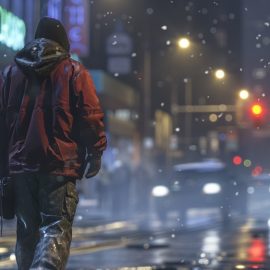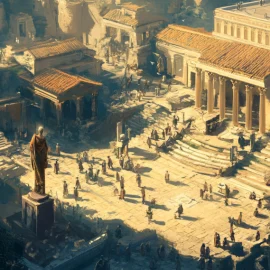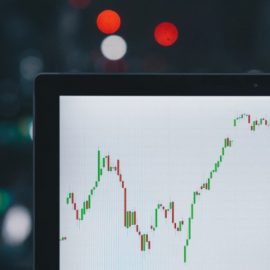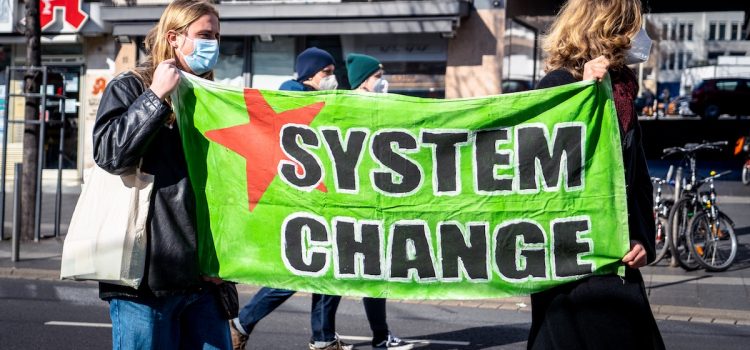
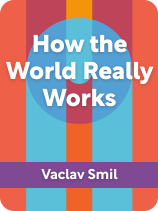
This article is an excerpt from the Shortform book guide to "How the World Really Works" by Vaclav Smil. Shortform has the world's best summaries and analyses of books you should be reading.
Like this article? Sign up for a free trial here.
How well do people understand the way the world works? How does this impact our assessment of climate change and its solutions?
According to scientist Vaclav Smil, climate change can be slowed, but only gradually and at great expense. In How the World Really Works, he argues that this is because our current way of life relies so heavily on fossil fuels.
Keep reading to understand the climate situation in the context of how the world really works.
Vaclav Smil on Climate Change
What do the food on your plate, the electricity that powers your home, and the plastic in everything from your clothes to your car have in common? They all require large amounts of fossil fuel. According to Vaclav Smil, climate change can be addressed effectively only when everyone has a shared understanding of how the world works.
Why We Don’t Understand How the World Works
According to Smil, most people don’t understand how the world works. This isn’t because they’re ignorant or even because knowledge is so specialized, but for three main reasons:
1. Urbanization: The majority of humans live in cities and work mostly in the service industry, so processes like the production of food, energy, and materials are largely invisible to us.
2. Automation: In addition, due to mechanization, very few people are actually involved in the processes that make our world run—for example, only 1% of Americans are directly engaged in farming and harvesting our food.
3. Glorification of data: The production of goods and energy is now seen as old-fashioned; the highest-paid and most desirable jobs are in tech and knowledge work.
To create a baseline understanding of how our world functions behind the scenes, Smil sets out to explain how energy, food production, and manufacturing all rely heavily on fossil fuels—and what that means for our environment and climate change.
(Shortform note: Despite Smil’s disclaimer, ignorance may play a part in some people’s understanding of how the world works. A study by the Organisation for Economic Co-operation and Development (OECD) demonstrated that American and English people in particular performed poorly in tests of math, technology, and literacy skills—all of which are crucial for understanding the topics Smil discusses. The countries that performed the best were Norway, Sweden, Japan, Finland, and the Netherlands. Some commentators point out that inequality is much worse in America and Britain than in the higher-performing countries; poor skills may thus be the result of a lack of education or job opportunities, rather than a lack of intelligence.)
How Does the Environment Work?
Smil argues that, for humans to survive, we need to make sure our actions don’t make Earth uninhabitable. In this section, we examine our effect on the environment by looking first at the history of climate change. Then, we look at how climate change affects our oxygen, water, and food supplies. Finally, we explore Smil’s contention that it’s difficult, if not impossible, to make climate predictions or meet current climate goals.
The History of Climate Change
Although the media and the world’s governments began to focus their attention on global warming in the late 1980s, Smil contends that we’ve known about the greenhouse effect and the dire consequences of increasing greenhouse gas emissions for at least 100 years. Around the turn of the 19th century, scientists calculated that a doubling of atmospheric carbon dioxide from preindustrial levels would result in significant warming—by one calculation, 4 degrees C, or 7.2 degrees F (which turned out to be fairly accurate). By 1958, scientists began measuring background concentrations of carbon dioxide in the atmosphere, and they showed constant and predictable increases over time.
| Public Opinion on Climate Change While scientists have warned of global warming for some time, one reason the general public did not share that concern is because for decades people saw it as more theoretical than real. This disinterest began to change as global temperatures increased. The summer of 1988 was the hottest on record at the time, and drought and wildfires were widespread in the US. The media and the public began to pay more attention to climate change scientists. In 1989, the Intergovernmental Panel on Climate Change (IPCC) was established under the UN to provide a scientific perspective on climate change and its economic and political impacts. Another reason the public’s opinion on climate change doesn’t always reflect that of the scientific community is that, especially in the US, global warming has become politicized. The issue began as a bipartisan one—for example, Republican George Bush campaigned as an environmentalist and helped launch the UN Framework Convention on Climate Change. But as it developed steam, fossil fuel interests took note and began to spend money on campaigns to oppose climate change action and portray it as a liberal position. Studies show that as of 2020, 78% of Democrats and 21% of Republicans say that climate change should be a top priority. |
How Climate Change Affects Oxygen, Water, and Food
There are many aspects of a healthy environment, but Smil focuses on three that are necessary for human life: oxygen, water, and food. Smil believes that we are in no danger of not having enough oxygen, water, or food as a result of climate change—if we eat less beef, manage water more efficiently, reduce food waste, and change our approach to growing crops. He outlines how climate change will affect each of these three substances.
Oxygen
Smil notes that we lose a tiny amount of oxygen every year (0.002%) due to burning fossil fuels, but it’s not enough to make a difference. There is no danger of us running out of oxygen, which makes up about 21% of the atmosphere by volume. He says the amount of oxygen in the atmosphere isn’t affected by the number of plants on the planet.
Water
Smil says that we waste huge amounts of water, and people in many places don’t have enough water to drink. Climate change will cause some water scarcity, but he believes the bigger issue is the increasing demand for water as a result of a growing population. The solution is to reduce water usage, which the US has done successfully.
Desalination plants (which turn salt water into fresh) can provide drinking water, but they’re expensive and can’t produce enough water to meet the volume needed by agriculture.
Global warming increases evaporation, which results in more rain overall—but not in the same places used to getting rain, and not predictably.
Food
Producing food uses fossil fuels and also creates additional greenhouse gas emissions as a result of methane emissions from cattle and cutting down forests to raise cattle or grow crops.
Smil explains that we need phosphorus from fertilizers to grow food, but phosphorus runoff, soil erosion, and phosphorus in animal and human waste can contaminate fresh and ocean water, causing large algae growths. Nitrogen runoff also causes these growths. When the algae in ocean water decompose, they consume oxygen, resulting in oxygen-depleted zones where sea life can’t survive.
Despite these issues, Smil contends that we’re in no danger of running out of food as a result of climate change.
The Difficulty of Making Climate Predictions or Meeting Climate Goals
Even for those with extensive experience and knowledge on the topic, Smil claims that it’s difficult, if not impossible, to make accurate predictions about global warming or meet current IPCC limits on warming.
The Challenge of Making Global Warming Predictions
Smil argues that it’s very difficult to make predictions about global warming because they rely on many layered assumptions, and world events are unpredictable.
Those who predict environmental catastrophe and those who forecast instant, technological solutions are both likely to be wrong, warns Smil, in part because complex predictions are often wrong.
The Challenge of Meeting Global Climate Goals
Because of our heavy reliance on fossil fuels, Smil claims that it’s impossible to meet the IPCC goal of no more than 1.5°C of warming by 2030 and net zero carbon emissions by 2050. The IPCC estimates would require us to cut global energy demand by half between 2030 and 2050, but, in the last 30 years, global energy demand has risen by 20%.
Smil notes that the IPCC goals rely on factors such as less demand for consumer goods. But, not only are we consuming more and more goods with every passing year, but the IPCC target also assumes that low-income countries won’t want to increase their share of material goods.
Smil points out that, other than cutting down on the carbon involved in electricity generation, the world has been slow to end its reliance on fossil fuels. Smil concludes that there currently is no feasible way to end our dependence on fossil fuels quickly—it will have to be a gradual and expensive process.
Exercise: Consider Climate Change Solutions
While Smil focuses more on the challenges of ending our dependence on fossil fuels than on potential solutions to climate change, he also discusses a range of methods for cutting down on carbon emissions—from projects that must be undertaken at a corporate and governmental level, such as transitioning to renewable or nuclear energy, to actions that individuals can implement themselves, such as insulating their homes or eating less meat. Consider your use of fossil fuels and the potential solutions to climate change.
- Which mass use of fossil fuels surprised you the most (energy use, food production, or materials)? Describe how that sector affects your life personally.
- Do you believe your country or community can realistically reduce the use of fossil fuels in that sector? If so, how? If not, why?
- Are there any individual actions that you would be willing to implement in your own life to combat climate change (for example, driving an electric car, voting or getting involved in local politics, eating less meat, supporting environmental organizations)? Why or why not?

———End of Preview———
Like what you just read? Read the rest of the world's best book summary and analysis of Vaclav Smil's "How the World Really Works" at Shortform.
Here's what you'll find in our full How the World Really Works summary:
- How modern-day life relies heavily on fossil fuels for nearly everything
- Why liberals and conservatives need to better understand how the world works
- Why it's nearly impossible to meet current IPCC limits on global warming


